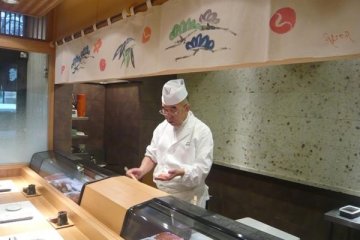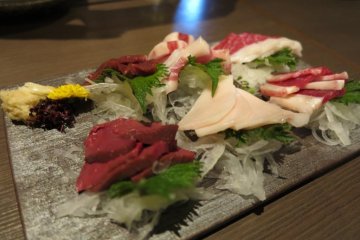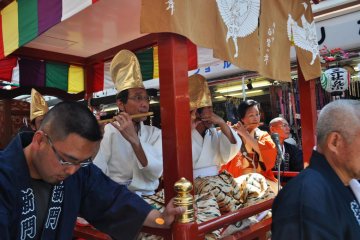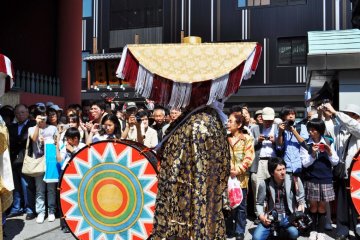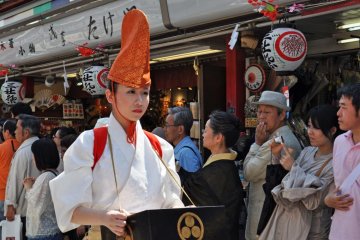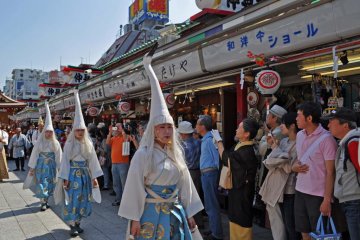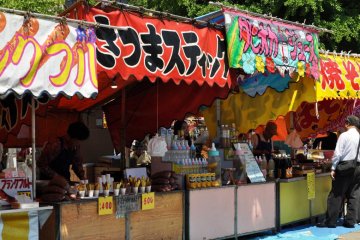Sanja Matsuri (Japanese Shinto festival) is part of the three largest Shinto festivals in Tokyo. It is an annual event held in Asakusa on the third weekend of May. I stumbled upon this matsuri purely by chance. Walking into the lobby holding my camera about to leave for Yokohama, I was approached by another guest in the apartment building. Referring to my camera the guest asked if was attending the Sanja Matsuri. This piqued my interest; all I had managed to find out was that it was in Asakusa. En route to the train station I decided to ditch my plans for Yokohama and take a chance in Asakusa to see what I could find.
Arriving in Asakusa I consulted the map outside the station and made my way to the Sensoji Temple as this seemed like the most logical place to go. Walking through Asakusa gave me a taste of old Japan with people walking around in their cotton kimonos and yukata. It seemed like a well preserved district. Once I had found my way to the Sensoji Temple I walked around to see if I could find any sort of clues alluding to the Sanja Matsuri. There were food stalls lining the sides of the temple selling shaved iced, yakitori (skewered grilled chicken) and other Japanese street food. Finding no evidence of the festival apart from the food stalls and school children running around, I assumed that I had missed the festivities.
Latest event details
I decided to have a look at the Sensoji Temple while I was there. This temple is the oldest one in Tokyo and it is beautifully constructed with so much attention to detail, a worthwhile place to go regardless of the festival. However I was feeling a bit disappointed about missing the festival so I headed off to get something to eat and make my way back to the station. Before leaving for the station I was tempted to have one more look so I quickly went back to the temple. I saw many photographers standing around near the gate of the temple. They all seemed to be anticipating something. I decided to join them and wait for whatever they were waiting for.
As luck would have it I found myself in the most ideal spot as the festival procession entered the gates of the temple. I was in awe and could barely operate my camera. There were participants were wearing hakama (traditional Japanese clothing) and dancers with long white wigs and hats that looked like herons. There were geisha, priests and musicians wearing costumes in the style of Edo period clothing. Traditional Japanese music consisting of drums and flutes flowed out of floats as the musicians were ushered through the parade. The matsuri was packed with people all trying capture the parade on camera. I ran through the alleys and slipped past people to catch up with the procession three times before I felt satisfied with what I had seen.
As I would later find out I had witnessed the daigyōretsu (large parade) part of the festival on the Friday. The festival runs through from Friday to Sunday with various events taking place. Through my western perspective, viewing this Shinto festival was a true awakening. Being exposed to this side of eastern culture proved to be memorable experience. Attending a Shinto matsuri while travelling in Japan is an absolute must. I’m glad I took the chance.



